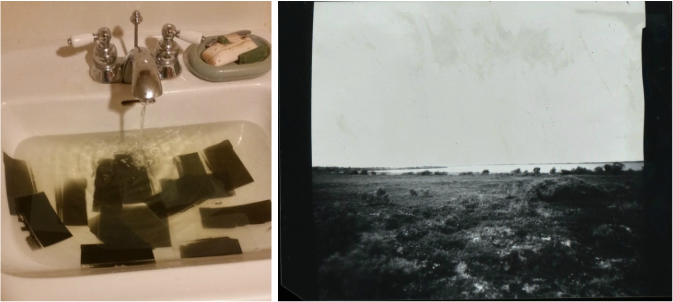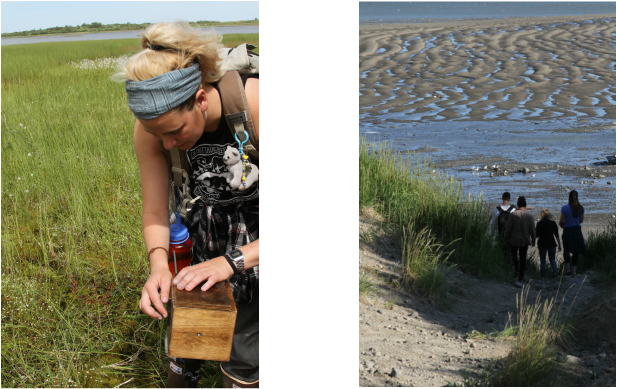|
As of today, hopefully Wednesday's will be the day I consistently blog about my thesis work. Now that school has begun, a schedule is emerging from the obligations of college life. Making food, staying awake in class, staying fit, and making money are the recurring events in my schedule thus far, and my bloodstream is beginning to run with coffee, water and a daily glass of wine (I take after my mother). In spare time, it is difficult to want to read a book about my thesis, even though I know I will enjoy it. At this point, I'm debating taking a train ride to nowhere just to force myself to read.
I have discovered that planning out exactly what I will do each week helps me achieve my goal, therefore I present to you the next two weeks of thesis work. Week 1: I have recently discovered that bones contain grease, which makes them smell (thanks bone-lust.blogspot.com) and I need to soak my bones in a water and dishsoap mixture to remove this smell. The process of degreasing may take multiple months depending on how much fat and grease is in the bones. Hopefully, being exposed to the elements this summer will have removed a lot of the grease on my specimens, but I'm going to start the process on most of my bones tonight. If I have time after doing other school work, I will read The Poetics of Space by Gaston Bachelard, which was recommended by Elaine Rutherford. Week 2: Luckily, I have some bone chips which will be perfect for experimentation and probably wont take very long to degrease, so next week I will be playing with cyanotyping and indigo dying on the bones. Scott Murphy bought an indigo kit over the summer and there are leftovers for use on the smaller bones to see what patterns and colors emerge. Questions being addressed through next weeks exploration are: 1) How long does it take to for bone cyanotypes to expose under UV light? 2) How long does it take for the unexposed chemical to rinse out of bones? 3) How clear of an image can be achieved on bones using the cyanotype method? 4) Does indigo dying work on bones? 5) If it works, does presoaking the bone in water help the dye soak in? 6) What colors and patterns can be achieved through dying the bones multiple times. I am excited to see how both chemical processes work on such a strange material and am hopeful for success, but am also prepared for failure. In the words of Brother David Paul "the restrictions create the most successful artwork," so lets find some restrictions and see what can be created. Peace and Blue, Lexi
0 Comments
I have been threatening my parents that our basement bathroom would become a darkroom since my high school days, i'm glad it finally happened. Red light on, I watched film develop in front of my eyes and felt victorious. The photos taken in Cedar Rapids, Okaboji, and NakNek all feel like a place, even if it is not exactly clear what they are. I am proud with this step taken in my thesis, however should probably keep taking more photos. Peace and Blue,
Lexi On July 30th, I made it to the lower 48 with all fingers attached, no resemblance of normal sleep schedule, and a pocket full of friends who make NakNek the special place it is. I forgot the peaceful delirium which comes over me when the only responsibilities I have are to wake up, go to work, and do my job well. In the Pre and Post-Season, I took photos of mud flats, abandoned boats, the view from a sand dune I fell in love on in 2015, and many more places of strength. The wetlands and beaches were scoured for bones by my squad of adventurers. Sadly, only two leg bones were found despite a fisherman telling us where a whale skeleton was (6 miles was a little far to walk). The short amount of time I had to explore and do my physical work was aided by good friends and 24 hour daylight. There were some places I couldn't return to because the memories were too strong to face. An abandoned house, a certain stretch of beach that held so much emotion, to return to them would spoil the angst and beauty they have in our heads and the poems written about them. Everything is amplified in Alaska, willingly or not, you rise higher and fall harder in a short period of time due to the stress and simplicity of life. There is Wifi at Leader Creek, however it is more frustrating than useful or fun, so when not adventuring, card games, writing, and reading were the best ways to spend time. I brought Rebecca Solnit's, books "A Field Guide to Getting Lost" and "Wanderlust" along with "The Essential Rumi" to help me learn and process my emotions and articulate what I want to show through my photographs. While reading "A Field Guide to Getting Lost", I discovered part of why I and many others are drawn to spend their summers laboring in Middle of Nowhere, Alaska. On page 16, Solnit states, "For [Virginia] Woolf, getting lost was not a matter of geography so much as identity, a passionate desire, even an urgent need, to become no one and anyone, to shake off the shackles that remind you who you are, who others think you are." We are not physically lost while in NakNek, I posted a map in my previous blog post, you can 'check in' at the bars in town on your phone, but mentally where are you? Who are you? Nobody knows unless you came up with a friend or partner. One of my good friends told me at the end of the season he is 100% sober in the real world, he just graduated to become a youth minister and has had a girlfriend for three years. He feels Alaska is the only place he will not be judged or expected to fit a mold. We can become anybody and nobody and everybody. We are allowed to be lost. |
This blog will follow my life and art process. Archives
December 2019
|
Proudly powered by Weebly

